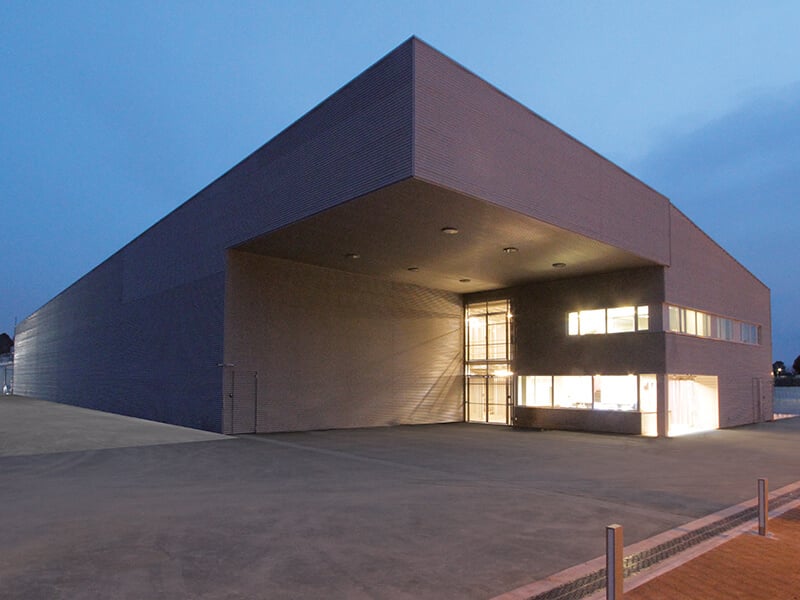In 2012, we began to see the emergence of the third generation, driven by the rapid growth in cloud computing. To better manage that growth, large cloud and colo providers leveraged their market influence to drive innovations in data center design that allowed them to move away from the Gen 2 approach of building data centers to support a desired future state the organization could grow into and toward a more flexible approach in which they can add capacity incrementally as needed.
In effect, they told data center equipment manufacturers and designers: we want to install what we need, when we need it, at the lowest possible cost.
We refer to this as the cloud generation and, while it represents a growing percentage of total industry capacity, it is a much smaller percentage of the total number of facilities. According to a recent study by IHS, cloud and colo account for 40 percent of all data center square footage, but only 5 percent of the total number of data centers. That means 95 percent of the data centers operating today, representing 60 percent of total capacity, aren’t well positioned, from a size and risk perspective, to take advantage of the flexibility and capital efficiency the Gen 3 data center provides.
This has led to the development of the Gen 4 data center, which brings the advantages of the Gen 3 data center to the rest of the market. This newest generation, which we call Edge2Core, is being driven by the need of enterprises to seamlessly integrate core and edge facilities, along with cloud-based and colocated resources, to provide near real-time capacity management across all assets.
There are changes to both the thermal management and power infrastructure required to support this evolution. We’ll cover the thermal management requirements in a follow-up post, but here are four considerations for the critical power system that support this evolution:
- The design of the UPS can contribute to greater operating flexibility and efficiency. Today’s state-of-the-art UPS models, such as the Liebert EXL S1, deliver higher power density, enabling them to support higher capacities in a smaller footprint; tri-state operation that allows the operating mode to be matched to incoming power quality for greater efficiency; and unit level scalability that reduces initial cost while maintaining future flexibility.
- Another feature of newer UPS models is support for lithium ion batteries (LiB). Lead acid batteries continue to represent the weak link in many Gen 2 data center power systems and LiBs now provide a solution for fortifying this weak link. LIBs have higher energy densities than lead acid batteries, providing weight and space savings. They can also safely operate at higher ambient temperatures without degrading, saving on cooling costs. Most importantly, they can last as much as four times longer than lead acid batteries, improving reliability and reducing replacement costs.
- The third leg of the power system that should be considered is power distribution. Newer PDUs support greater flexibility by enabling components to be reprovisioned without de-energizing the PDU. In addition, by integration the PDU into the distribution architecture at the factory, redundant components are eliminated, providing faster deployment, lower cost and a smaller footprint.
- Finally, there are opportunities to evolve the UPS architecture to create greater utilization and scalability. Many enterprises are finding they can move from a 2N + 1 to a 2N architecture, or from a 2N architecture to a reserve architecture, and achieve higher utilization and greater flexibility while still maintaining the redundancy they need to meet availability goals.
The benefits of each strategy are compelling; however, data center managers who have developed a successful track record operating Gen 2 data centers rightfully approach any change to what is working with some skepticism. In general, their concerns fall into four categories:
- My operations people are comfortable with our current approach, which is delivering the availability we need. How can I be sure they will accept these changes, which they may see as radical?
- We like some components of this, but we can’t do it all right now. Do I have to embrace every strategy to realize the benefits of the Gen 4 data center?
- Will this work in my data center? How do I tailor it to my specific requirements and equipment?
- We aren’t building any new data centers. Can we apply this to an existing facility without disrupting our operations and ripping out equipment that is functioning well?
These are complex questions that need to be answered based on the specifics of the situation. But, there are some general principles that apply to all.
First, it is essential that you get comfortable with the technologies and architectures prior to making any change. We have seen data center managers who were initially skeptical about the willingness of their organizations to adapt Gen 4 strategies, evaluate the technologies and architectures in relation to their data center and became strong advocates for change. For example, one organization found that moving from a 2N + 1 UPS architecture to a scalable 2N architecture reduced their initial costs by more than 30 percent and resulted in a 50 percent reduction in their cost per kW. Armed with this information, the data center manager became a champion for change within his organization.
That organization, for various reasons, did not get comfortable with LiBs and chose to stay with VRLA batteries. It isn’t necessary to adapt all four strategies to realize significant benefits. The strategies are complementary, but each has a value on its own they should be evaluated independently as well as collectively. Often they can be applied to brownfield sites without significant disruption, depending on the existing equipment and facility configuration. You don’t know until you sit down with your infrastructure partner and review the viability of each.
The edge is growing and the need exists across organizations for greater flexibility and improved operating efficiency. The enterprise data center isn’t going away, but it does need to evolve out of the Gen 2 model to better support growth at the edge, increase asset utilization and operating efficiency, minimize complexity and enable automated control and management. A clear path has now emerged for data center operators to accomplish these goals.





